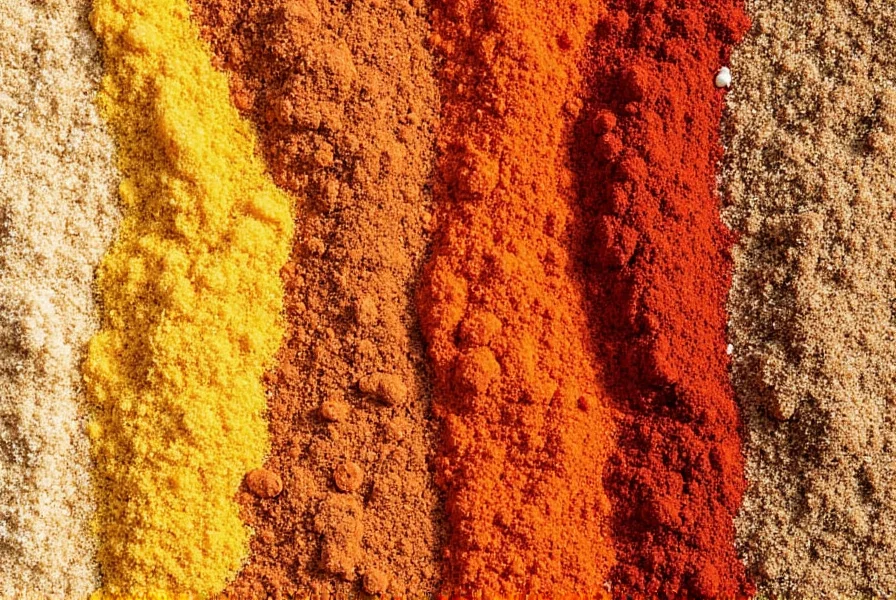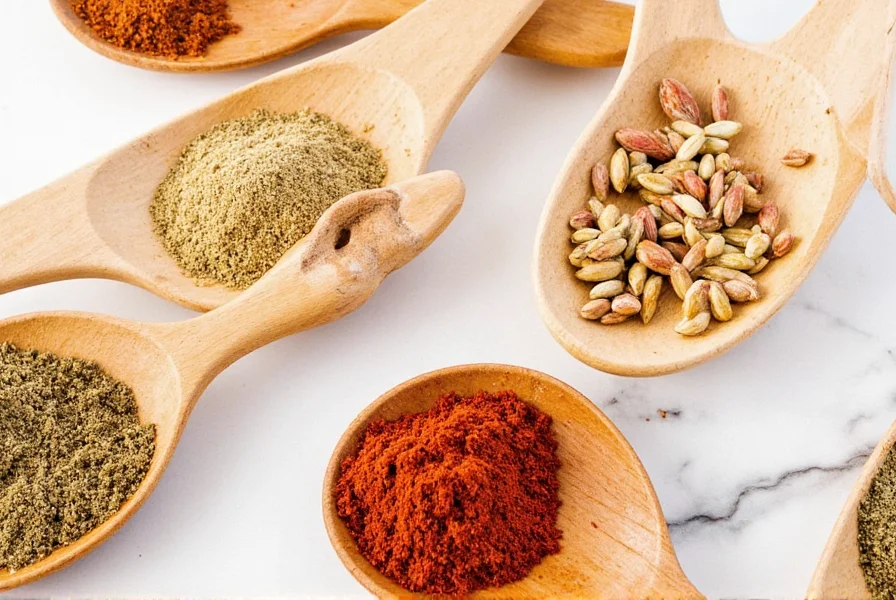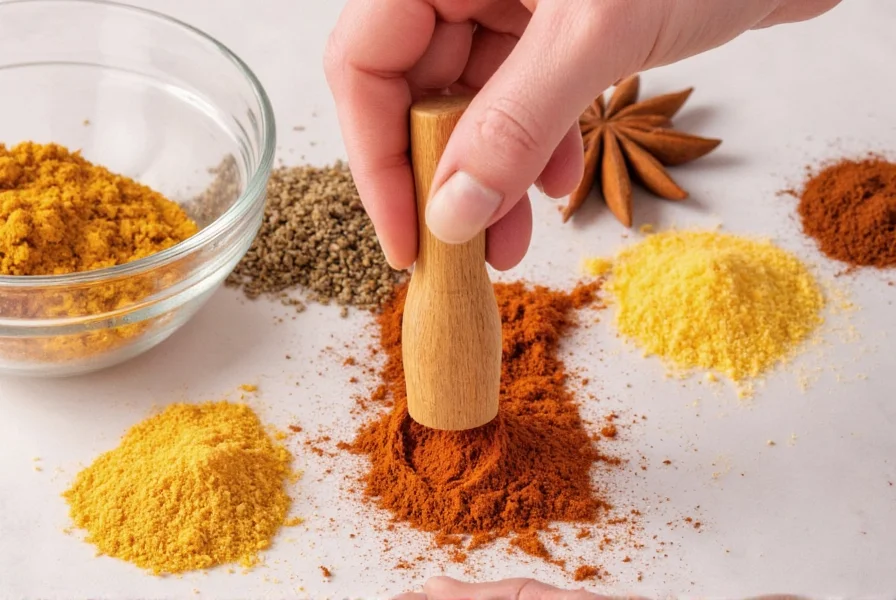How to Store Spices Properly: Science-Backed Tips for Maximum Freshness
Proper spice storage is essential for maintaining flavor and aroma. Spices contain volatile compounds that degrade when exposed to oxygen, light, heat, and moisture. Understanding these factors helps you preserve freshness and maximize flavor in every dish.
Optimal Storage Conditions for Different Spices
Each spice has unique storage needs based on its chemical composition. Here's how to store them for maximum freshness:
- Cinnamon sticks: Store in a cool, dark place away from light and humidity.
- Paprika: Protect from light exposure to prevent color and flavor degradation.
- Coriander seeds: Keep in a dry environment to avoid moisture absorption.

The Science Behind Flavor Degradation
Spices lose flavor due to the oxidation and evaporation of essential oils. When exposed to air, light, or heat, these compounds break down, reducing potency. Whole spices retain freshness longer than ground spices because they have less surface area exposed to degrading elements.
| Spice | Shelf Life | Best Storage Condition |
|---|---|---|
| Cumin | 3–4 years | Cool, dark place |
| Paprika | 2–3 years | Refrigerated (optional) |
| Turmeric | 2–3 years | Airtight container |
10 Science-Backed Spice Hacks for Maximum Flavor
Apply these evidence-based techniques to enhance your cooking:
- Toast Whole Spices: Dry-toasting releases volatile aromatic compounds through thermal decomposition, enhancing flavor complexity. Use cumin seeds before grinding.
- Bloom in Oil First: Fat-soluble compounds like curcumin in turmeric dissolve better in oil. Always bloom spices in heated oil for full flavor extraction.
- Grind Just Before Use: Ground spices lose potency rapidly. Invest in a manual grinder for fresh, fine powder.
- Keep Herbs Whole: Leaves retain volatile oils longer. Crush oregano or thyme only when adding to dishes.
- Freeze Fresh Chilies: Freeze whole chilies without prep. Capsaicin remains stable, preserving heat and flavor.
- Avoid Heat Sources: Storing near stoves accelerates oxidation. Keep spices 3+ feet from cooking surfaces.
- Use Oxygen Absorbers: For bulk spices, add food-safe oxygen absorbers to slow oxidation in airtight containers.
- Label with Dates: Track freshness with clear labels. Most ground spices lose potency after 1-2 years.
- Revive Stale Spices: Toast at 300°F for 5-10 minutes to evaporate moisture and restore some aroma.
- Crush Seeds Immediately: Break cardamom pods or fennel seeds just before use for maximum flavor release.

How pH Affects Spice Chemistry
Acidic or alkaline environments alter spice behavior:
- Acidic ingredients (like tomatoes) enhance capsaicin solubility in chili powders, intensifying heat.
- Alkaline conditions can break down delicate compounds in herbs like rosemary, reducing aroma.
Essential Spice Tools Based on Scientific Principles
1. Manual Spice Grinder
Product Highlight: Porcelain Mortar and Pestle
- Advantages: Preserves oils better than electric grinders by avoiding heat buildup
- Use Cases: Small batches of delicate spices like cloves or saffron
- Target Audience: Home cooks prioritizing freshness and control
- Suitable Occasions: Everyday cooking, specialty dishes
2. Airtight Spice Jars
Product Highlight: OXO Good Grips Airtight Containers
- Features: BPA-free plastic with rubber-sealed lids
- Advantages: Prevents oxidation and moisture intrusion
- Use Cases: Bulk spices, homemade blends
- Target Audience: Serious home chefs and spice enthusiasts
- Suitable Occasions: Long-term storage, travel-friendly

3. Digital Spice Scale
Product Highlight: Escali Primo Digital Scale
- Features: Precise measurements down to 0.1 gram
- Advantages: Ensures accurate spice ratios for consistent flavor
- Use Cases: Recipe development, spice blends
- Target Audience: Precision-driven cooks and bakers
- Suitable Occasions: Baking, international cuisine
4. Vacuum Sealer for Spices
Product Highlight: FoodSaver FV Seal & Pump System
- Features: Removes air, prevents spoilage
- Advantages: Extends shelf life by up to 5x for rare spices
- Use Cases: Bulk purchases, collector-grade spices
- Target Audience: Gourmands and serious collectors
- Suitable Occasions: Emergency prep, gourmet cooking
5. Spice Label Printer
Product Highlight: Brother P-touch Label Maker
- Features: Customizable text and date stamps
- Advantages: Tracks freshness and prevents waste
- Use Cases: Organizing pantry, labeling containers
- Target Audience: Minimalist chefs and organizers
- Suitable Occasions: Meal prepping, shared kitchens

Frequently Asked Questions About Spice Science
Why do spices lose flavor over time from a chemical perspective?
Spices degrade due to oxidation and evaporation of volatile compounds like terpenes and phenols. Exposure to oxygen, light, and moisture accelerates this process. Whole spices retain freshness longer than ground versions because they minimize surface area exposure to degrading elements.
What's the scientific reason behind toasting spices before use?
Dry toasting triggers thermal decomposition, releasing aromatic compounds without the Maillard reaction (which requires proteins and sugars). This process enhances flavor complexity by volatilizing essential oils, making them more perceptible in dishes.
How does storing spices near heat sources affect their chemical composition?
Heat accelerates oxidation and evaporation of volatile compounds. Studies show spices stored near heat sources lose up to 50% more potency within six months compared to cool storage. Higher temperatures increase molecular movement, breaking down delicate flavor molecules faster.
Why is blooming spices in oil scientifically beneficial for flavor extraction?
Many flavor compounds (like curcumin in turmeric) are fat-soluble and insoluble in water. Blooming in oil dissolves these compounds through lipid extraction, significantly increasing bioavailability and flavor transfer to dishes. This process is critical for maximizing the impact of spices in recipes.
How does pH affect spice chemistry during cooking?
pH alters solubility and stability of spice compounds. Acidic environments (low pH) enhance capsaicin solubility in chilies, intensifying heat in tomato-based dishes. Alkaline conditions (high pH) can degrade delicate aromatic molecules in herbs like rosemary, reducing their perceived flavor.
Can old spices make you sick, or do they just lose flavor?
Properly stored dry spices rarely become unsafe but lose potency through chemical degradation. Ground spices typically maintain quality for 1-2 years; whole spices last 3-5 years. The primary issue is flavor loss from oxidation, not microbial spoilage. However, moisture exposure can cause mold growth, which requires discarding the spice immediately.











 浙公网安备
33010002000092号
浙公网安备
33010002000092号 浙B2-20120091-4
浙B2-20120091-4